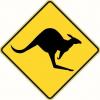The 60 1/2 is an excellent block plane. However, my favorite is the 65 with the knuckle joint cap. Whatever block plane you get, get a modern iron for it, such as the LV PM-V11. Except for how the plane fits into your hand, the blade makes the block plane.
Also, I'd recommend you sharpen to a 25 degree bevel. If that doesn't hold up, you can always put a secondary bevel at a higher angle, such as 30 degrees. But you can't put a 25 degree secondary bevel on a 30 degree primary bevel.
Mike
Go into the world and do well. But more importantly, go into the world and do good.





 Reply With Quote
Reply With Quote






